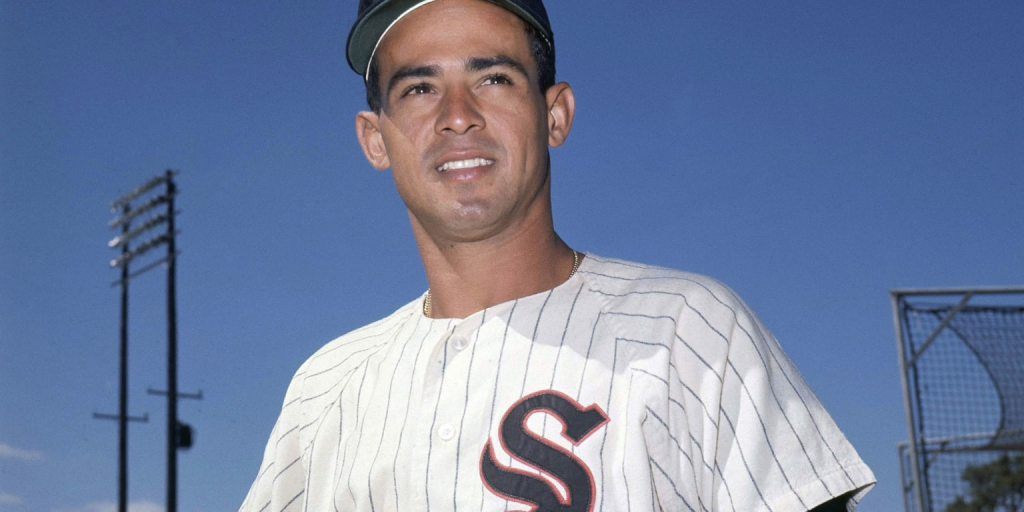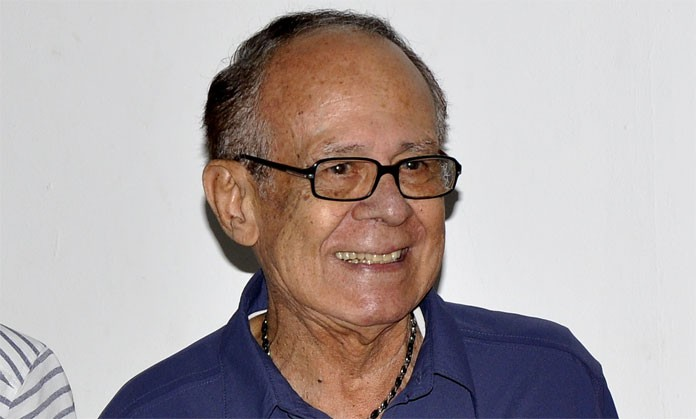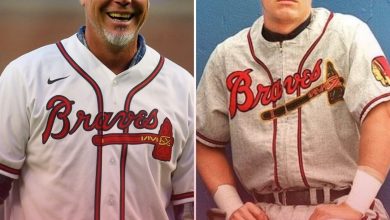Nine Gold Gloves, 500 Stolen Bases — and a Lifetime of Quiet Greatness. DD


Luis Aparicio was never one to fade quietly into the backdrop of baseball’s history. Even when the spotlight drifted toward new faces, new gloves, new hopes, he somehow found a way to pull it right back—through grace, precision, and an unshakable love for the game that made his every motion on the field feel like a masterclass in timing and instinct.
When he arrived in Baltimore, something inside him seemed to click again. The spark that had always been there—quick feet, faster thinking—suddenly burned brighter. He led the league in stolen bases and fielding percentage, reaching a career-high .983 mark in 1963, the kind of number that only comes from muscle memory sharpened by obsession. Alongside Brooks Robinson and Jerry Adair, Aparicio helped form one of baseball’s finest defensive walls. Watching them was like watching clockwork—three men moving with the rhythm of trust.
By 1964, the Venezuelan shortstop had done the unthinkable yet again: nine straight seasons leading the league in stolen bases. Fifty-seven thefts that year broke George Sisler’s franchise record from way back in 1922, and as if that weren’t enough, he added another Gold Glove to his collection—his sixth. It wasn’t just speed anymore; it was legacy being stitched together, one bag at a time.
Then came 1966—a season that seemed almost poetic. Aparicio batted .276 with 182 hits, tying with Frank Robinson for second in the league. He won his seventh Gold Glove, helped carry Baltimore to its first American League pennant, and finished ninth in MVP voting—right behind teammates who swept the top three spots. And when the Orioles swept the Dodgers in the World Series, it felt like validation for all those years of quiet excellence. Luis wasn’t the loudest, but he was the kind who made you remember him long after the cheers faded.

But baseball, like life, doesn’t stop moving. When young Mark Belanger began to emerge, Aparicio was traded back to the White Sox—the city where it had all started. That November of 1967, he returned not as the young phenom but as a seasoned artist, his glove as reliable as ever. In 1968 and 1969, he led the league in range factor, proving that time hadn’t dulled his instincts. On May 15, 1969, under the lights in Detroit, he notched his 2,000th hit—a quiet milestone in a 10-inning loss that said more about endurance than triumph.
Then came 1970, his renaissance. He hit .313, the best average of his career, scored 86 runs, and finished fourth in the batting race. Another All-Star berth, another Gold Glove—his ninth. Late that season, he passed Luke Appling’s team record for most games at shortstop, 2,218 of them, all marked by consistency and quiet leadership. The Sox finished last, but Luis still landed 12th in MVP voting—a rare feat for a man on a losing team.
The next chapter came draped in Boston red. Traded to the Red Sox in December 1970, Aparicio entered the final act of his career still carrying that trademark mix of elegance and fire. In April 1971, he had one of those nights that feel carved in memory: a grand slam and a two-run double in Cleveland, six RBIs in a single game. Yet, the same season tested him with a 44 at-bat hitless streak—one shy of a century-old record for futility. When he finally broke it with a single against Kansas City, the crowd’s cheer wasn’t for the hit—it was for the man who never gave up swinging.
In 1972, he began shattering records once held by Appling and Dahlen, setting new marks for total bases and assists as a shortstop. On August 15, he collected his 2,500th hit in a win over Texas. But baseball can be cruel in its timing. Late that season, a heartbreaking stumble—literally—cost Boston the division. In a crucial game against Detroit, Aparicio slipped rounding third, forcing Carl Yastrzemski into a doomed retreat that helped decide the pennant. One misstep, one half-game difference. For a player who’d made a career out of perfect balance, it was a moment that must have stung deep.

He played one more season in 1973, hitting .271 and stealing his 500th base—a symbol of speed and will that no stumble could erase. Along the way, he broke yet another Appling record: most hits by a shortstop, 2,594 of them. When he finally stepped away that year at age 39, it wasn’t with fanfare or farewell tours. Just quiet dignity, the same way he played.
Luis Aparicio’s career was never about noise. It was about rhythm—the rhythm of a man who treated the game as both craft and calling. He was the heartbeat of the infield, the whisper of speed between bases, the stillness before the throw. And even now, decades later, his story feels alive—like the echo of a glove snapping shut on a perfect play.





